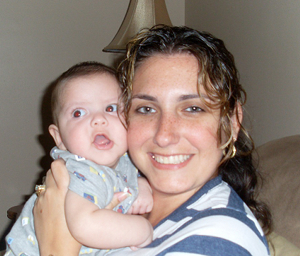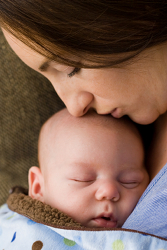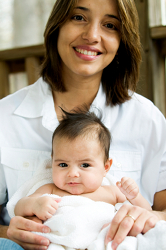New moms more educated, older, more ethnic
Posted by Elena del Valle on August 11, 2010

Photos: Babyspot.com, Todobebe.com
Our nation’s birth rate has declined in the past 20 years. During that time period new mothers have become more likely to be older, better educated and less likely to be white. Fewer white women are having babies while an increasing number of babies are born of Hispanic moms, according to a recently released report. One in four births in 2008 was to a Hispanic mother. Although white women still represented more than half of mothers of newborns that year that was less than the 65 percent of white women who gave birth in 1990.
More than half of mothers of newborns in 2006 had spent some time in college which was an improvement over the 41 percent of women who had some college education in 1990. Older mothers of newborns, those 35 years of age and older, were much more likely to have some college education (71 percent).

James Rivera, co-founder, Babyspot
“I do see evidence of your findings, our site agrees with most of your data. Our traffic has increased in the last year, it’s around 30 percent increase,” said James Rivera, co-founder and chief executive officer, BabySpot, Inc. when asked if he sees evidence of these trends.
Women are also waiting longer to have babies than they did twenty years ago. While in 1990, teenagers had a higher share of all births (13 percent) than did women 35 years of age and older (9 percent) by 2008, the reverse was true with 10 percent of births to teens and 14 percent to women ages 35 and older. This increase in older mothers held across ethnic groups.

More unmarried women by far (41 percent) had babies in 2008 than in 1990 (28 percent). Black unmarried women were the most likely to have babies compared white and Hispanics.
“There are 4M (million) births per year and 1M (million) are to Spanish speaking parents, 25 percent of the newborns. This has been a constant for the past two years and is based on U.S. Census Live Birth Statistics,” said Cynthia Nelson of Todobebe.com. “We have a 20 percent increase in moms that join Todobebe in the past year and about 55 percent of our moms are pregnant at any one give time. There is no one month during the year that there are more births with the exception of the slight increase in September (December holidays trigger this event).”
In 2008, there were 4.3 million births in our country slightly more than in 1990 when there were 4.2 million. Between 2003 to 2007 the number of births increased each year and then declined by about 66,000; the researchers believe the decrease is the result of the economic downturn.

Immigrants tend to have higher birth rates than the native born although those rates have declined in recent years. The share of births to foreign-born mothers, 15 percent of U.S. births in 1990, grew 60 percent through 2004. In 2004, births to foreign-born women represented the majority of Hispanic (61 percent) and Asian (83 percent) births.
Although it is hard to think about our nation’s demographic profile in 40 years, according to Pew Research Center population projections and assuming current trends remain steady, 82 percent of the nation’s population growth through 2050 will be produced by immigrants who arrived in our country after 2005 and their descendants. The researchers estimate 142 more million people will fuel our population between 2005 and 2050; of these 50 million will be the children and grandchildren of new immigrants.
The report, The New Demography of American Motherhood, was written by Gretchen Livingston and D’Vera Cohn of the Pew Research Center based on data from the National Center for Health Statistics and the Census Bureau. It also included the findings of a national Pew Research Center survey about parenthood.










